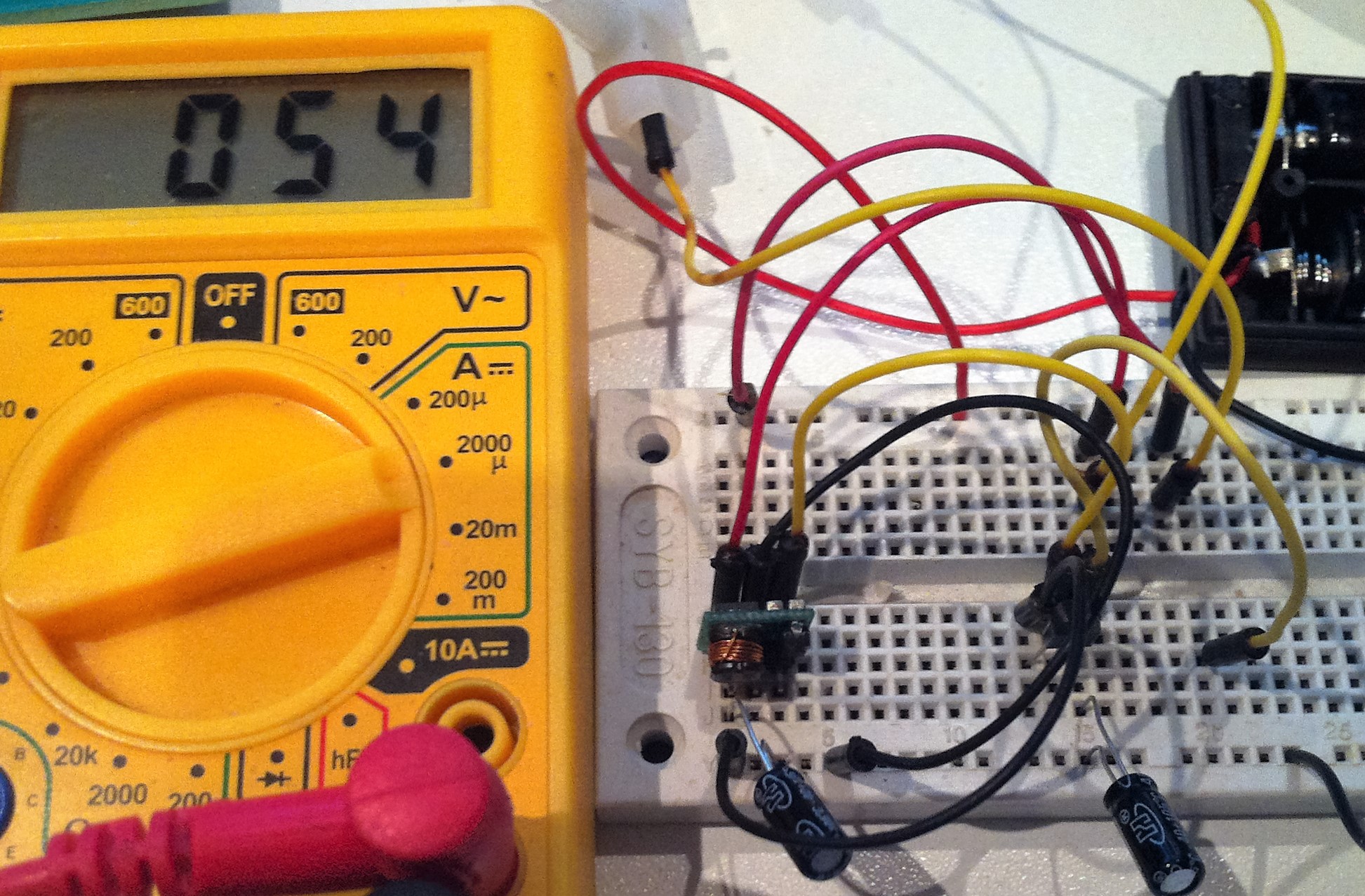If you use Set to send your temp/hum you can define how many decimals you want:
MyMessage& set(float value, uint8_t decimals);
For example:
gw.send(msgTemp.set(temperature, 1));
will send you the value with 1 decimal.
Reference: here
If you use Set to send your temp/hum you can define how many decimals you want:
MyMessage& set(float value, uint8_t decimals);
For example:
gw.send(msgTemp.set(temperature, 1));
will send you the value with 1 decimal.
Reference: here
I have it working :smiley: only need to play with the debounce value
@ahmedadelhosni that really sucks :disappointed:
mfalkvidd means:
gw.wait(dht.getMinimumSamplingPeriod());
In the first sketch change
gw.begin (msg, NODE_ID) ;
to
gw.begin (NULL, NODE_ID) ;
Another way is to track the amount of people that enters the room. This can be done with a double IR beam horizontally placed next to each-other (IR-A and IR-B). Now when a person walks into the room, you know that IR-A triggers before IR-B, and you increment the room-occupants-counter with 1. If the person leaves the room, IR-B will trigger before IR-A and you decrease the counter.
The IR barrier can be installed inside the door casing.
Using this technique you don't need a PIR sensor, unless the room has a window and you want to detect movement without someone passed the IR beams (a burglar maybe?)
Combine the IR beams with a lightsensor and you can also define that the light should go on only below a certain light level.
My 2 cents...
Maybe this will help: http://jmsarduino.blogspot.be/2009/10/4-way-button-click-double-click-hold.html
Is your controller setup to hand out ID's to the sensor nodes?
What if you set a fixed ID?
I'm developing a controller and I reset my sensor nodes all the time and the ethernet gateway keeps working as expected.
My advice: do not power your nRF from the arduino 3.3V pin, instead, take power from the 5V pin and step that down to 3.3V using a voltage regulator. (like LM1777 including caps)
Just took the time to shoot a pic of my Step-Up consumption, including a Voltage regulator MCP1702-3.3
As you can see, it's consuming 54uA with nothing connected.
Step-Up module: link
The capacitors are really important, one on the input of the step-up module, the other on the output of the MCP1702-3.3, both are 22uF. Without them, consumption is 2.20mA

please indent your code with 4 spaces to keep it readable.
And in the arduino gui press CTRL-T to tabify your code correctly ;)
The high-performance Atmel® ATmega328PB is an 8-bit AVR RISC-based microcontroller (MCU) with picoPower® technology. It combines 32kB ISP Flash memory with read-while-write capabilities, 1kB EEPROM, 2kB SRAM, 27 general purpose I/O lines, 32 general purpose working registers, five flexible timer/counters with compare modes, internal and external interrupts, two USARTs with wake-up on start of transmission, two byte-oriented 2-wire serial interfaces, two SPI serial ports, 8-channel 10-bit A/D converter, programmable watchdog timer with internal oscillator, a unique serial number and six software selectable power saving modes. The device operates between 1.8-5.5 volts.
The ATmega328PB is the first 8-bit AVR MCU to feature the QTouch® Peripheral Touch Controller (PTC), which acquires signals in order to detect touch on capacitive sensors, and supports both self- and mutual-capacitance sensors. The PTC is supported by the QTouch Composer development tool (QTouch Library project builder and QTouch Analyzer). It provides a faster and less complex capacitive touch implementation in any application.
The ATmega328PB supports 24 buttons in self-capacitance mode, or up to 144 buttons in mutual-capacitance mode. Mixing and matching mutual-and self-capacitance sensors is possible, and only one pin is required per electrode – no external components are required, delivering savings on the BOM cost compared to competing solutions.
By executing powerful instructions in a single clock cycle, the device achieves throughputs approaching 1 MIPS per MHz, balancing power consumption and processing speed.
Nice feature for MySensors is that it has 2 SPI interfaces, so nice for the ethernet gateway ;) and also has a Unique ID
Application note here
Thanks to @samuel235 for finding this.
Flash (Kbytes): 32 Kbytes
Pin Count: 32
Max. Operating Freq. (MHz): 20 MHz
CPU: 8-bit AVR
# of Touch Channels: 12
Hardware QTouch Acquisition: Yes
Max I/O Pins: 27
Ext Interrupts: 27
USB Speed: No
USB Interface: No
SPI: 2
TWI (I2C): 2
UART: 2
Graphic LCD: No
Video Decoder: No
Camera Interface: No
ADC Channels: 8
ADC Resolution (bits): 10
ADC Speed (ksps): 15
Analog Comparators: 1
Resistive Touch Screen: No
DAC Channels: 0
DAC Resolution (bits): 0
Temp. Sensor: Yes
Crypto Engine: No
SRAM (Kbytes): 2
EEPROM (Bytes): 1024
Self Program Memory: YES
External Bus Interface: 0
DRAM Memory: No
NAND Interface: No
picoPower: Yes
Temp. Range (deg C): -40 to 85
I/O Supply Class: 1.8 to 5.5
Operating Voltage (Vcc): 1.8 to 5.5
FPU: No
MPU / MMU: no / no
Timers: 5
Output Compare Channels: 10
Input Capture Channels: 3
PWM Channels: 10
32kHz RTC: Yes
Calibrated RC Oscillator: Yes
Watchdog: Yes
CAN: 0
LIN: 0
Ethernet: 0
Debug Interface: debugWIRE
I2S: No
RTC: Counter
There are only 2 interrupts available, thats why you are not seeing the pulses from the 3th